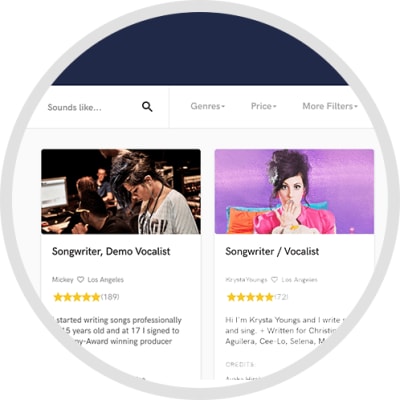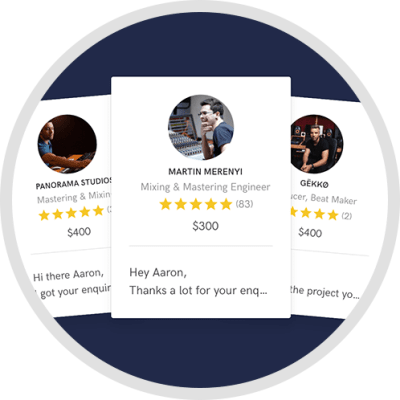
In the echo of roaring chords and thunderous beats, my guitar screams the untold stories, painting the canvas of sound with the vibrant colors of rebellion.
I am Ishtiaq Mahmood, a virtuoso guitarist and composer renowned for my groundbreaking work in the realms of Rock and Blues. With a career spanning over two decades, Mahmood's music is a mesmerizing blend of intricate guitar work, cultural influences, and an unwavering commitment to pushing the boundaries of musical expression. I released two instrumental rock album called "Numbers" and "Blue" and they are published in the major musical platforms like Spotify, Youtube music, Bandcamp, Deezer etc. I owned a Musical Studio Called "Dream Catcher's Nest", which is the main Workstation of mine. I write, record, play, mixing, mastering and other technical things in my studio and i enjoy my works and I enjoy music a lot.
I'd love to hear about your project. Click the 'Contact' button above to get in touch.
Languages
- Bengali
- English
Interview with Ishtiaq Mahmood
Q: Tell us about a project you worked on you are especially proud of and why. What was your role?
A: I published Two Instrumental Album Called "Numbers" and "Blue". These Two Album contains 18 track. I compose them, arrange, record, mixing, mastering, edit and published them.
Q: What are you working on at the moment?
A: I am working on an instrumental album called Dreamer.
Q: Analog or digital and why?
A: I prefer Digital Music. Because, Recording Format: Digital music is recorded and stored in a numerical format, typically as binary code (0s and 1s). Clarity and Precision: Digital recordings are known for their clarity and precision. The format can accurately capture and reproduce a wide range of frequencies. Editing and Manipulation: Digital recordings are easily editable and manipulable. Digital audio workstations (DAWs) provide powerful tools for editing, mixing, and processing. Convenience: Digital music is highly convenient for storage, sharing, and distribution. It's easily transferable between devices, and file formats such as MP3 or FLAC are widely used. Durability: Digital recordings are less susceptible to degradation over time compared to analog formats. They can be copied without loss of quality.
Q: What's your 'promise' to your clients?
A: I don't Compromise Quality of music.
Q: What do you like most about your job?
A: Music is peaceful job and I always that my soul is connected with my guitar, what I feel I can play, Music is a language and I deliver words with my music.
Q: What advice do you have for a customer looking to hire a provider like you?
A: If you're a customer seeking musical services, such as hiring a musician, composer, or any music-related service, here are some tips to consider: Define Your Needs: Clearly articulate what you're looking for. Whether it's a specific type of music, instrument, or a particular project, having a clear vision will help in finding the right match. Research the Provider: Investigate the background and work of the musician or service provider. Look for a portfolio, previous projects, or samples of their work to ensure it aligns with your preferences. Check Reviews and Testimonials: Look for reviews and testimonials from previous clients. This can give you insights into the provider's reliability, professionalism, and the quality of their work. Communication is Key: Establish clear communication channels. Ensure that the musician or service provider understands your vision, preferences, and any specific requirements you have. Discuss Budget and Terms: Clearly discuss the financial aspects of the project. Understand the pricing structure, payment terms, and any additional costs that may be involved. Agree on Timelines: Set realistic timelines for the project. Discuss deadlines for milestones and the final delivery to avoid any misunderstandings or delays. Sample Work or Auditions: If possible, ask for samples or auditions to get a better sense of the provider's style and capabilities. This can be particularly important for larger projects or ongoing collaborations. Contracts and Agreements: Formalize the arrangement with a written contract or agreement. Ensure that it includes details on deliverables, timelines, payment terms, and any other relevant terms. Discuss Revisions: Clarify the number of revisions included in the project. This is important to ensure that the final product meets your expectations. Be Open to Collaboration: If your project involves collaboration, be open to sharing ideas and working together creatively. Clear communication and a collaborative approach often lead to better results. Understand the Process: Gain an understanding of the creative process and any steps involved. This can help manage expectations and contribute to a smoother collaboration. Provide Feedback: Regularly provide constructive feedback during the process. This ensures that the final product aligns with your vision. Remember, effective communication and a clear understanding of expectations are key to a successful collaboration in the world of music services. Whether you're hiring a musician, composer, or any other musical service, a positive and transparent working relationship can lead to a more satisfying outcome.
Q: If you were on a desert island and could take just 5 pieces of gear, what would they be?
A: Electric guitar, Bass, Keyboard, Mandolin and a Drumkit.
Q: What was your career path? How long have you been doing this?
A: I am working as a Musician and Audio Engineer For 10 years and going on.
Q: Which artist would you like to work with and why?
A: I would like to work with David Gilmour For his outstanding sense of tone and cleanest guitar playing.
Q: Can you share one music production tip?
A: Gain staging involves managing the levels of audio signals at different stages of the production process, from recording to mixing. Here's why it's crucial: Prevent Distortion: If your input levels are too high, it can lead to distortion. This is especially important during recording. Ensure that your recordings have a healthy signal level without clipping. Maintain Headroom: Leave sufficient headroom in your mix by avoiding overly high levels at each stage. This provides room for dynamics and prevents clipping during the final mix. Balanced Mix: Proper gain staging helps in achieving a balanced mix. Each track should have a consistent level relative to others, making it easier to mix and preventing the need for excessive compression or limiting. Plugin Performance: Plugins in your DAW operate optimally when they receive a well-leveled input signal. Adjust the gain before plugins to get the best performance and avoid unnecessary artifacts. Final Output: When mixing down to a stereo track, make sure your master output levels are appropriate. Aim for a healthy overall level without pushing the mix into clipping. To implement good gain staging: 1. Set input levels appropriately during recording. 2. Adjust track levels within your DAW to achieve a balanced mix. 3. Use gain or trim controls before plugins to optimize their performance. 4. Monitor your master output levels to avoid clipping. By paying attention to gain staging, you create a solid foundation for a cleaner, more dynamic mix and avoid potential issues down the production chain.
Q: What type of music do you usually work on?
A: Instrumental Rock, Rock, Blues, Jazz, Country, Folk, Movie Soundtrack etc.
Q: What's your strongest skill?
A: Music Composer and Experienced Guitar player.
Q: Tell us about your studio setup.
A: A good studio setup comprises essential components to facilitate high-quality audio production. My Studio typically includes: Computer and DAW: A powerful computer with a Digital Audio Workstation (DAW) for music creation, recording, and mixing. Audio Interface: Connects microphones and instruments to the computer, providing high-quality audio conversion. Studio Monitors and Acoustic Treatment: Quality monitors and acoustic treatment ensure accurate sound representation and a controlled listening environment. Headphones: Professional studio headphones for detailed monitoring during recording and mixing. Microphones: Versatile microphones for various recording needs, such as vocals and instruments. MIDI Controller: Allows control of virtual instruments and enhances the creative process. Instruments: Depending on the musical style, guitars, keyboards, and other instruments for recording. Control Surfaces: Enhances hands-on control of the DAW, especially during mixing. Studio Furniture: Ergonomic desk and chair for a comfortable and productive workspace. Acoustic Environment: Proper room acoustics and soundproofing contribute to a clean and accurate audio production. Backup Solutions: Reliable backup systems to prevent data loss. Inspiration Corner: Personal touches like artwork or decor for a creative and inspiring atmosphere.
Q: What other musicians or music production professionals inspire you?
A: Hans Zimmer, David Gilmour, Marty Friedman, Joe Satriani, Steve Vai, Jason Becker, Andy Timmons, Guthrie Govan, Yngwie Malmsteen, Yanni, Jeff Beck, Tosin Abasi, Vangelis, and others.
Q: Describe the most common type of work you do for your clients.
A: Music Composing, Guitar Playing, Audio editing, Audio Mixing, Audio Mastering, Audio Recording, Audio Engineering.

I was the Mixing engineer, composer in this production
- Electric GuitarAverage price - $25 per song
- Film ComposerAverage price - $200 per minute
- Full instrumental productionAverage price - $400 per song
- Game AudioAverage price - $500 per day
- MandolinAverage price - $50 per song
- Mastering EngineerAverage price - $70 per song
- Mixing EngineerAverage price - $400 per song
- Joe Satriani
- Marty Friedman



